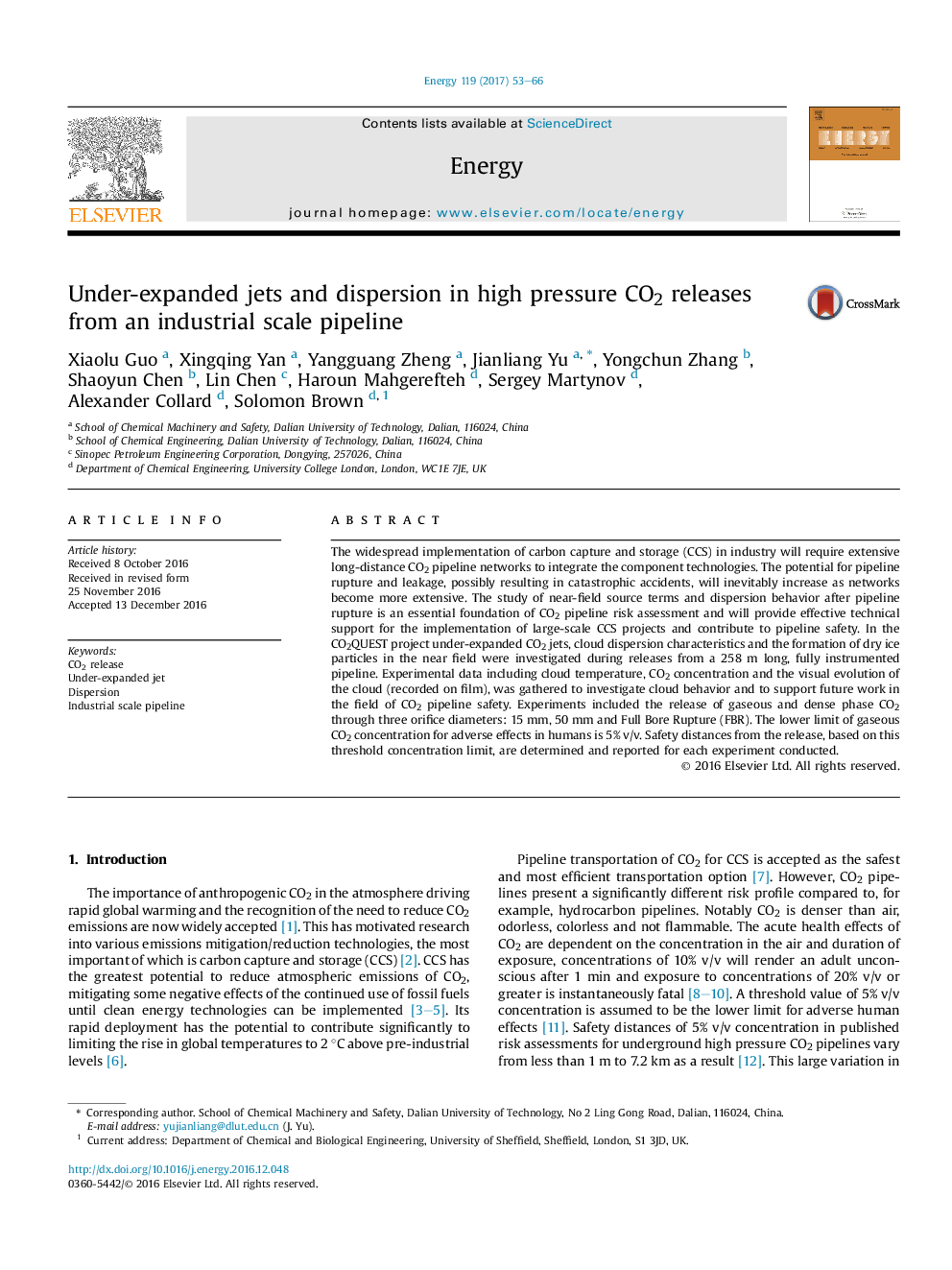| Article ID | Journal | Published Year | Pages | File Type |
|---|---|---|---|---|
| 5476863 | Energy | 2017 | 14 Pages |
Abstract
The widespread implementation of carbon capture and storage (CCS) in industry will require extensive long-distance CO2 pipeline networks to integrate the component technologies. The potential for pipeline rupture and leakage, possibly resulting in catastrophic accidents, will inevitably increase as networks become more extensive. The study of near-field source terms and dispersion behavior after pipeline rupture is an essential foundation of CO2 pipeline risk assessment and will provide effective technical support for the implementation of large-scale CCS projects and contribute to pipeline safety. In the CO2QUEST project under-expanded CO2 jets, cloud dispersion characteristics and the formation of dry ice particles in the near field were investigated during releases from a 258Â m long, fully instrumented pipeline. Experimental data including cloud temperature, CO2 concentration and the visual evolution of the cloud (recorded on film), was gathered to investigate cloud behavior and to support future work in the field of CO2 pipeline safety. Experiments included the release of gaseous and dense phase CO2 through three orifice diameters: 15Â mm, 50Â mm and Full Bore Rupture (FBR). The lower limit of gaseous CO2 concentration for adverse effects in humans is 5% v/v. Safety distances from the release, based on this threshold concentration limit, are determined and reported for each experiment conducted.
Related Topics
Physical Sciences and Engineering
Energy
Energy (General)
Authors
Xiaolu Guo, Xingqing Yan, Yangguang Zheng, Jianliang Yu, Yongchun Zhang, Shaoyun Chen, Lin Chen, Haroun Mahgerefteh, Sergey Martynov, Alexander Collard, Solomon Brown,
